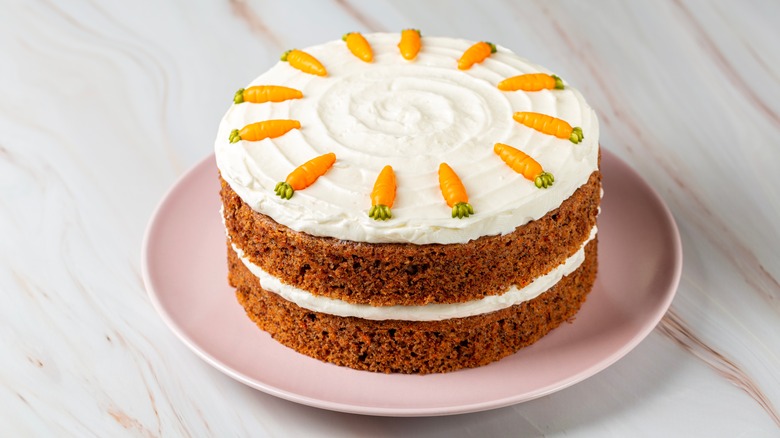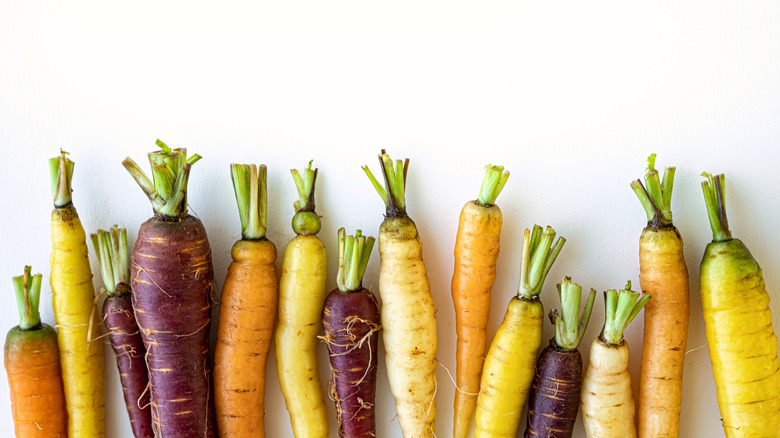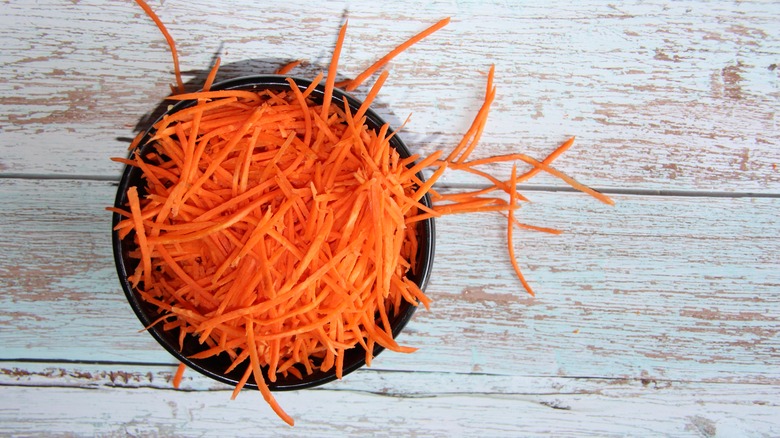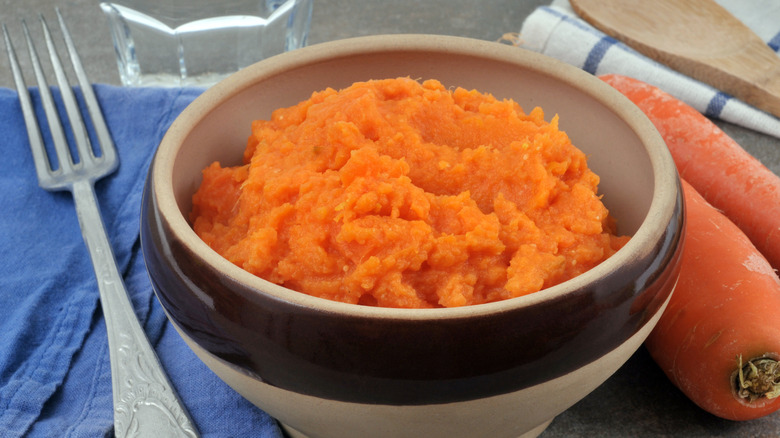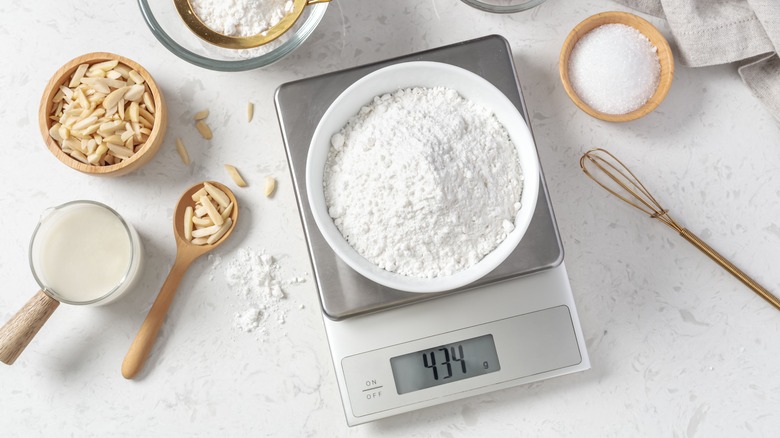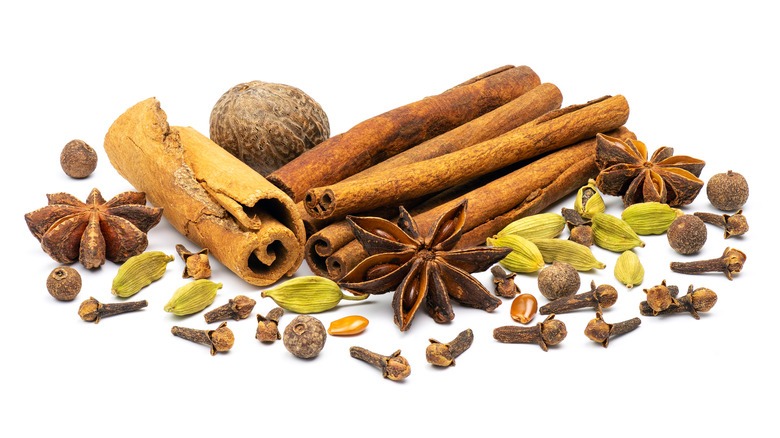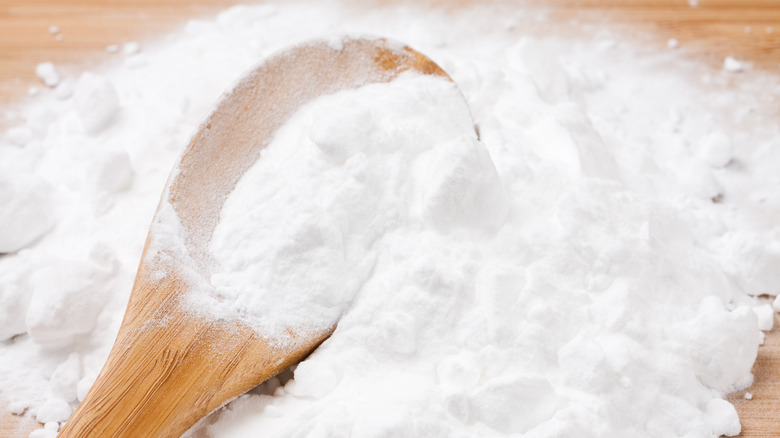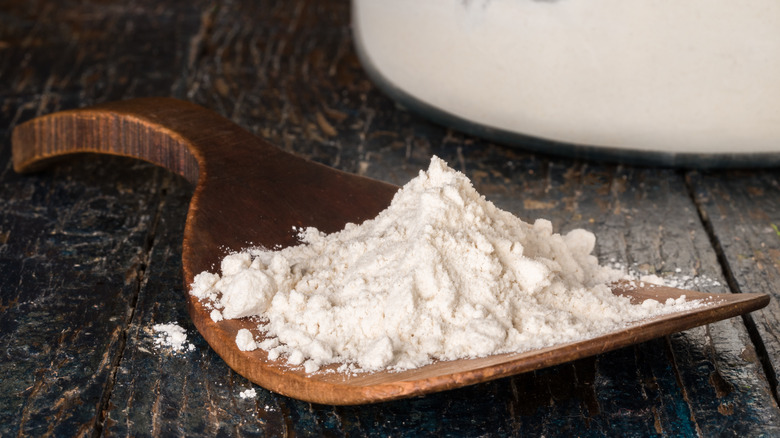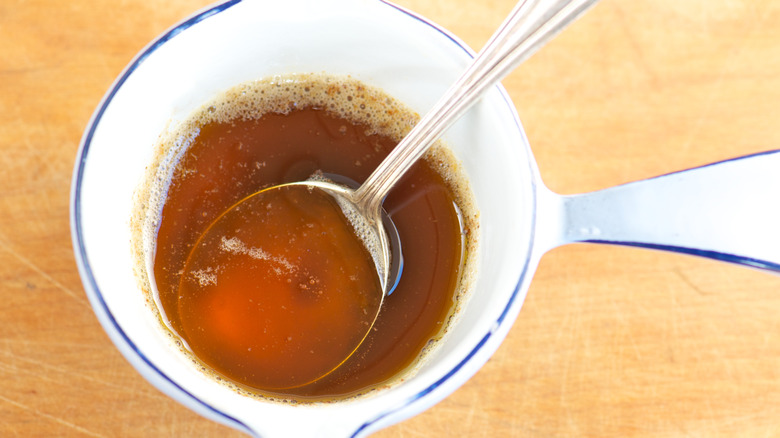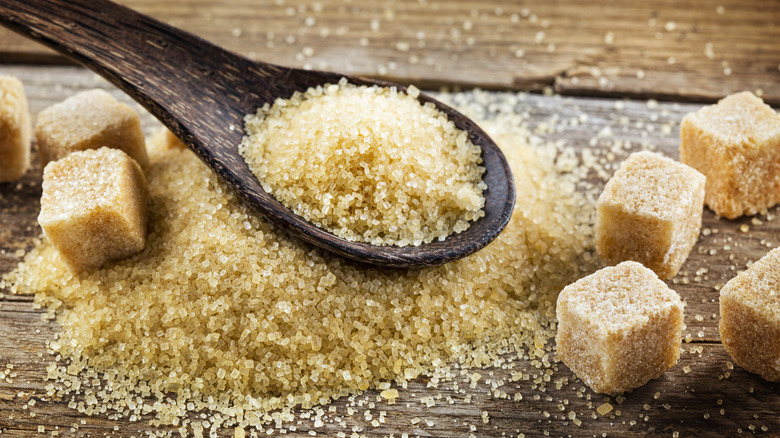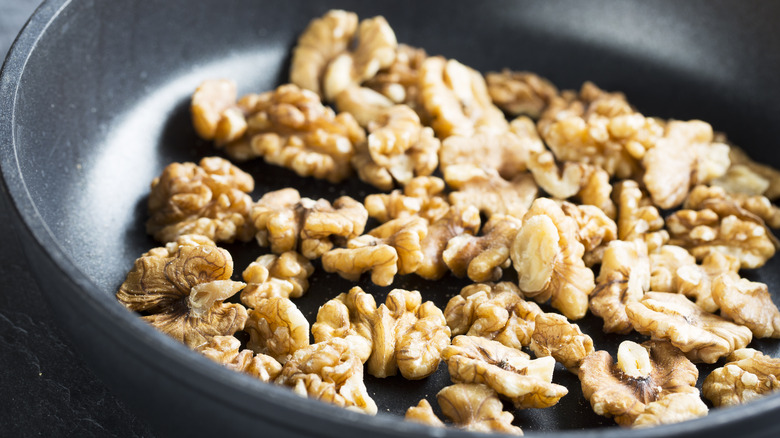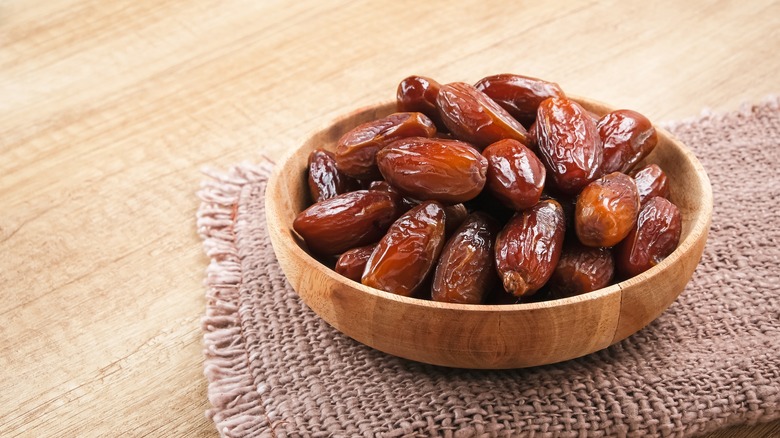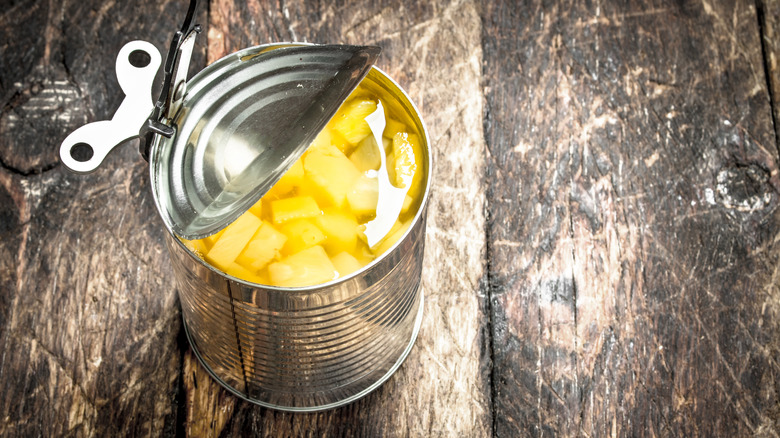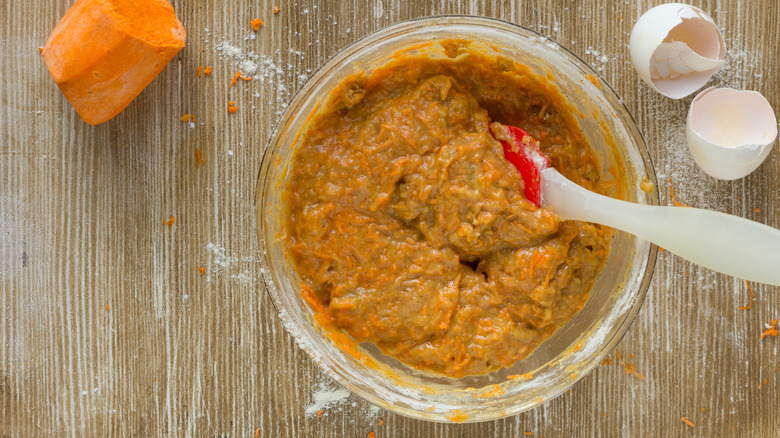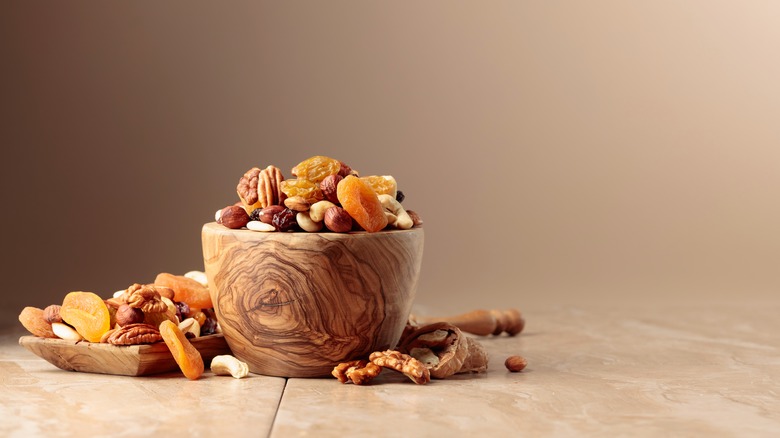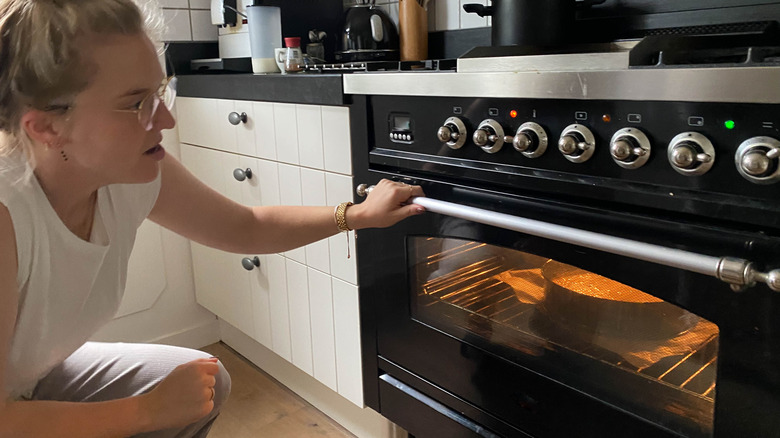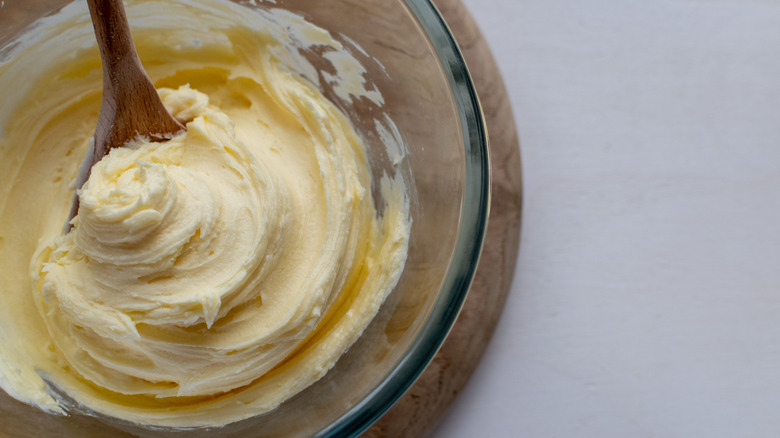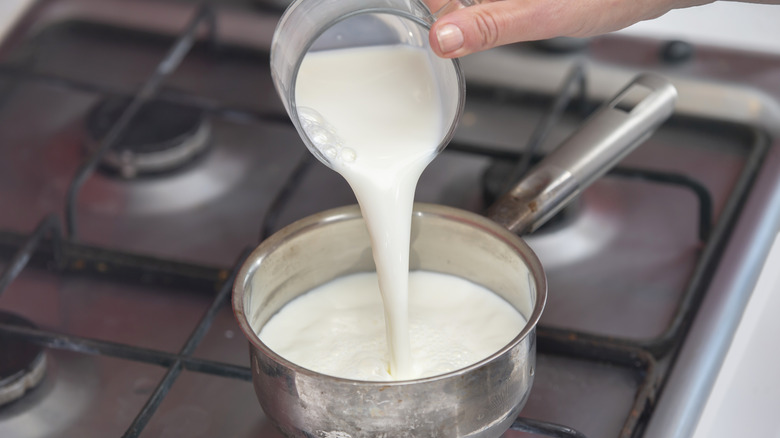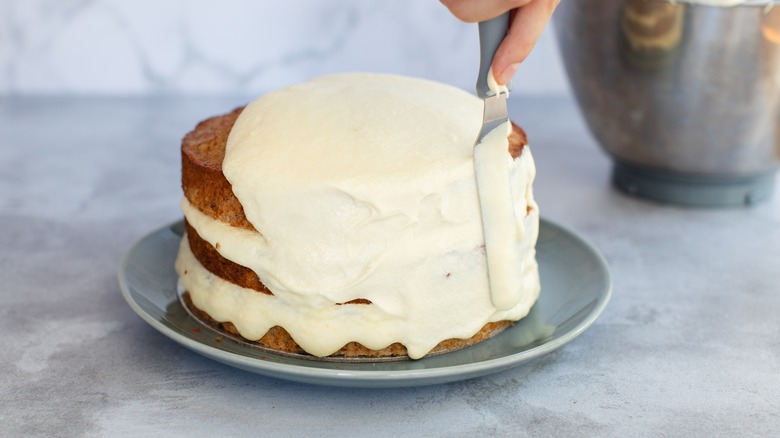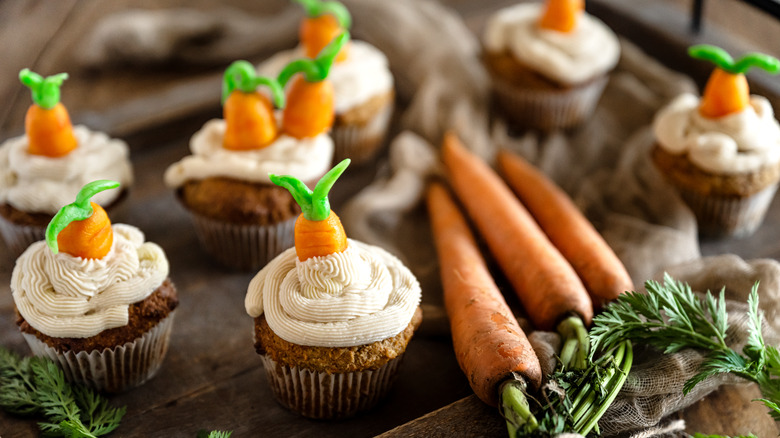19 Common Mistakes A Chef Wants You To Avoid When Baking Carrot Cake
Though its origins date back to Medieval times, carrot cake is as popular today as ever, and virtually every bakery and grocery chain worth its salt has its own variation for sale. That said, the process of baking a carrot cake with cream cheese frosting is quite simple if you want to create something memorable for a special occasion. It just requires some basic knowledge of not only how to elevate your carrot cake recipe, but also what pitfalls to avoid when doing so.
That's where I come in. As a chef with nearly 18 years of professional experience, I have baked many carrot cakes for restaurant guests. And, on a more personal note, it was also the cake my husband and I chose for our wedding more than 25 years ago. With that, to say I have a vested interest in making the best carrot cake imaginable would be an understatement. That's why I want you to be able to successfully create the most delicious carrot cake possible, and I'm here to share the tricks of my trade with you. Read on for my list of the most common mistakes people make when baking a carrot cake.
1. Mistake: Buying the wrong carrots
Crunchy, fresh carrots are a must-have for carrot cake. Though canned, frozen, or even pre-shredded carrots may seem more convenient, they are not ideal for giving a carrot cake its luscious texture or flavor. While you can use baby carrots, I recommend against it. Baby carrots are indeed made from whole carrots, but they are clumsy to work with and tend to dry out quickly.
Purchase whole carrots either from the store or farmer's market. If you have access to them, carrots harvested during the winter will be sweeter than those gathered at any other time of the year. Lastly, some varieties of carrots (like Nantes and Solar Yellow carrots) are inherently higher in sugar than others, making them more suitable for adding to a cake.
2. Mistake: Grating the carrots too coarsely
As a carrot cake bakes, the shredded carrots begin to cook, releasing moisture that tenderizes the cake and brings forth natural sugars, sweetening the treat. For this to occur, the carrots must be grated finely enough to be able to break down during the baking process. As already noted, pre-shredded carrots seem like a great idea, but they shouldn't be used. They tend to dry out quickly and remain toothsome in a finished carrot cake, giving it a dry texture and unpleasant mouthfeel.
The best way to grate carrots is to use the fine shredding side of a box grater and do so by hand. A food processor is convenient, but typically cannot yield fine enough results. Alternatively, consider using a mandoline or a microplane to grate your carrots. As a bonus, the finer you shred carrots, the sweeter they become (which is ideal for carrot cake).
3. Mistake: Not using carrot purée
Again, while you can use baby carrots to make a carrot cake, they are kind of a pain to work with. Their size makes shredding them to the appropriate size challenging, and they dry out rapidly due to their lack of skin. A better option is to turn your baby carrots into a carrot purée and then add that to your cake batter. You can also try using some baby food made from carrots in the batter.
Puréed carrots keep the cake moist and infuse carrot flavor throughout the baked treat. But when adding some carrot purée, you may need to adjust the amount of liquid used in your recipe so that the cake doesn't become overly watery. I prefer using half shredded carrots and half carrot purée or carrot baby food for a more complex result.
4. Mistake: Measuring the ingredients by volume
I'm one of those chefs who prefers fewer gadgets and gizmos in my kitchen. That said, when it comes to baking, using a scale to measure your ingredients by weight is crucial to maintain consistency and accuracy. Measuring cups, which measure by volume, are notoriously unpredictable. There is too much potential for human error, as the way we scoop, pack, and level an ingredient into each cup can dramatically impact the amount going into your cake. This can result in a carrot cake that is dense and coarse, rather than light and fluffy.
While you don't need to invest a fortune in a state-of-the-art scale, you do need to use it correctly for it to be effective. Some of the most common mistakes made when using a kitchen scale include forgetting to zero it out, not using the "tare" function, and placing it on an uneven surface.
5. Mistake: Skimping on the spices
As a culinary instructor, I routinely encountered horrified looks from my students when they would see the amount of spices I used in recipes. The truth is that most people are afraid of using herbs and spices because they think they will overdo it. While this is a legitimate concern, for the most part, I find that people are overly conservative with their seasonings, particularly when baking, because they can't taste as they go and add more as needed.
Ground spices (like cinnamon, cloves, nutmeg, ginger, and allspice) are commonly added to carrot cake to give it nuance and a depth of flavor that is rich and complex. Carrot cakes are spice cakes at heart, so they require these warm notes to build on the natural sweetness of the shredded carrots.
6. Mistake: Not using both baking soda and baking powder
Baking soda and baking powder are both leaveners. However, they work differently, which is why you often find both in recipes. Baking soda, or sodium bicarbonate, is an alkaline compound that produces carbon dioxide when combined with acidic ingredients. Baking powder takes the qualities of baking soda and expands them, by adding an acid (typically cream of tartar) and a buffer (usually cornstarch).
This combination ensures that your baked goods expand when exposed to acid and when infused with a liquid. In the case of double-acting baking powders, a secondary rise will occur when the batter is exposed to the heat of the oven. Since many carrot cake recipes do not include enough acid to create adequate leavening with baking soda alone, they will include both to maximize rise.
7. Mistake: Using the wrong flour
Considering the type of flour to use when baking any kind of cake is important, but perhaps doubly so when making a carrot cake. Because there are so many moist ingredients in a carrot cake, you need to use a flour that can bind those components together while maintaining the appropriate texture. This usually means a high-protein flour, which more efficiently produces gluten.
Cake flour, for example, is produced from soft wheat that has a low protein content and is delicately milled to accommodate lighter, fluffier recipes, making it ineffective for a carrot cake. All-purpose flour, and even some whole grain flours, on the other hand, contain high amounts of protein, making them rich in flavor and more capable of withstanding heavy, wet ingredients. For best results, try combining all-purpose flour with another high-protein one (like spelt or even hemp flour) when baking a carrot cake.
8. Mistake: Failing to swap out the oil
Most recipes for carrot cake call for adding oil to the liquid ingredients, creating a moist and tender batter. Oil is the ingredient of choice because it is liquid at room temperature, making it easy to combine. That said, most oils used for this process (like vegetable, canola, or grapeseed) have a relatively neutral flavor.
If you are looking to amp up the taste of your cake with the fat you add, there are a couple of options. First, you can use a nut oil (like almond, pistachio, or peanut) in place of the standard oil. Alternatively, try swapping the oil with brown butter. When properly prepared, brown butter will remain liquid at room temperature for about an hour, allowing it to easily be incorporated into the carrot cake batter, and infusing it with a rich, caramel-like flavor that can't be beat.
9. Mistake: Only using white sugar
While brown sugar and white sugar are not always interchangeable, in the case of a carrot cake, the former can help transform your recipe from average to astounding. This is because brown sugar is made by reincorporating molasses into refined sugar, giving it high moisture content and a distinctively savory, caramel-like flavor.
The key is to only replace half of the white sugar with brown sugar. This will impart enough of that brown sugar flavor while partially transforming the cake's texture to something a little more dense and luscious. When choosing between light and dark brown sugar, the choice is up to you. The flavor of dark brown sugar is more intense. It's also somewhat higher in moisture content, but it won't completely change the texture of your cake.
10. Mistake: Not toasting the nuts
Though walnuts are the gold standard for carrot cake nuts, there is no reason why you can't change things up and swap them with macadamia nuts, pistachios, cashews, or almonds. Regardless of which nut you choose to add for that crunchy texture and extra flavor, you will want to enhance them by toasting the nuts before incorporating them into the batter.
If you happen to be one of those people who enjoys a tropical twist on carrot cake — in the form of shredded coconut — you will also want to consider toasting that before adding it to the batter. Coconut tends to be divisive. This is less because of its flavor, and more because of its texture, which can be sawdust-like. Toasting helps to firm up shredded coconut, giving it a crunchier mouthfeel and eliciting a richer, more nutty flavor.
11. Mistake: Sticking with raisins
Another potentially divisive ingredient commonly added to carrot cake is raisins. Raisins add a chewy texture and burst of sweetness to carrot cake that can be complementary — if incorporated with restraint. That said, regular raisins can be dry and overly toothsome. One solution is to swap the regular raisins with golden ones, which tend to be sweeter and more moist.
But don't limit yourself to dried fruit derived from grapes. There are plenty of other options to bolster your carrot cake that will provide complexity with less assertive flavors and textures. Dried currants and cherries are comparable in size, but are perhaps slightly more tart, giving the cake some nuance. I also enjoy Mediterranean staples, like dried apricots, dates, and figs. Just be sure to chop these up well before adding them to your carrot cake batter. This will help produce a better mouthfeel.
12. Mistake: Skipping the pineapple
In continuing with the trend of potentially controversial mix-ins for carrot cake, I present pineapple. I love pineapple in my carrot cake, less for its inherent taste, and more for what it does to improve the texture and flavor of the cake, as it bolsters the sweetness and adds moisture. The one issue to overcome with pineapple is its naturally occurring enzyme, bromelain, which is well-documented for its protein-denaturing properties. This can cause dessert recipes to turn into a pile of goo if you are not careful.
The key is to avoid fresh fruit and opt for the canned variety. When pineapple is heated, as in the canning process, bromelain tends to become less potent, reducing its capacity to break down the proteins in flour and eggs. I prefer canned, crushed pineapple and always drain the liquid before adding it to my carrot cake batter.
13. Mistake: Over-mixing your cake batter
In a perfect world, all recipes would have instructions for how long to mix your cake batter. Unfortunately, many recipes for carrot cake will include instructions like "mix until just combined," or a warning to not over-mix it. That said, knowing if cake batter has been over-mixed or under-mixed can be hard to determine.
Under-mixed carrot cake batter is slightly more obvious, as there will be large pockets of flour and clumps of ingredients bound together. An over-mixed batter is less perceptible, but will become apparent if the cake makes it to the oven and into your mouth. Over-mixed carrot cake will develop too much gluten. It will fail to rise, become firm, and develop an almost glue-like texture. To prevent this, you should only stir your carrot cake batter until you notice there are no large streaks of flour left, but the batter is not totally smooth.
14. Mistake: Not balancing your add-ins
Carrot cake is notorious for being a proverbial dumping ground for add-ins. In many ways, the basic recipe is like a blank slate. That said, baking is still a science, and some accuracy is required for a recipe to turn out properly. This complicates the matter of what, and how many, add-ins to toss into your carrot cake.
Add-ins provide complexity in texture and flavor, and they can also help keep your cake moist. Too few add-ins can mean a boring, dry cake. Too many can weigh your cake down and cause it to be overly dense or soggy, particularly if you go overboard with wet ingredients (like pineapple) or heavy ones (like nuts). Most recipes will offer guidelines for how much of each type of add-in to incorporate. You can adjust which ingredients you use, but not the amounts.
15. Mistake: Over-baking or under-baking your cake
Every oven is different, making bake times somewhat unreliable. To complicate matters, while a burnt cake is pretty easy to identify, an underdone cake is less obvious. It may look perfectly risen, set, and golden brown, but the interior could be completely raw and gooey.
The best way to ensure your cake is properly baked is to use a toothpick or wooden skewer, and insert this into the center of the cake. If it comes out dry and mostly clean, your carrot cake is fully baked. Should there be any tacky batter on the toothpick or skewer, let the cake remain in the oven for a few minutes longer. If you notice that the top of the cake is getting too brown, but the center is not set yet, cover it with aluminum foil until it's completely baked through.
16. Mistake: Only using cream cheese for the frosting
While I tend to be a cream cheese frosting snob when it comes to carrot cake, not everyone enjoys its distinctive tangy flavor. For this reason, it's important to expand your definition of the perfect carrot cake, and this involves playing around with different types of frosting.
You can certainly use a traditional American buttercream frosting, but don't be afraid to think outside the box. For example, you can make your own labneh frosting for a Middle Eastern twist on the classic. This yogurt-like ingredient has the tang of cream cheese, but it's thinner — more akin to sour cream. The result is a lighter, fluffier frosting that is distinctive. And, if you really want to blow people's minds, try popping a couple of tablespoons of cocoa powder into your carrot cake batter, and top it with a rich chocolate frosting.
17. Mistake: Foregoing a buttermilk glaze
You may think carrot cake needs frosting. Well, it may or may not, if you whip up a delectable buttermilk glaze to pour over it while the cake is still warm. A buttermilk glaze is exactly what it sounds like, a rich combination of sugar, butter, buttermilk, corn syrup, and baking soda, that are reduced until thickened and seasoned to taste with vanilla. When the cake comes out of the oven, puncture it several times using a knife and drizzle the glaze over it. As the cake absorbs the glaze, it will soak in the flavor and moisture.
And, while you could stop there and enjoy the cake as-is once it cools, if you still want to add that cream cheese frosting, go right ahead. The glaze will prevent the cake from drying out while adding extra complexity.
18. Mistake: Frosting a warm cake
Among the many mistakes you can make when frosting a cake, one of the most common ones that can completely ruin the entire thing is being impatient. You cannot frost a cake before it has cooled completely. Doing so will result in the frosting melting, separating into a pile of sludge, and sliding right off the cake.
It is best to allow a cake to cool for at least a couple of hours, until it is no longer warm to the touch, before applying your perfectly made frosting. Alternatively, you can encase the slightly warm cake in plastic wrap, and pop it into the refrigerator for a couple of hours, or overnight, before you frost it. This will ensure the center is set and completely cooled, and give you a nice firm surface to work.
19. Mistake: Not transforming it into cookies or cupcakes
Carrot cake is a versatile recipe with many possible permutations that are sure to spice up your culinary life. The most obvious of these is to downsize them. Cupcakes are all the rage right now, and carrot ones are no exception to this fad. You can turn any carrot cake recipe into cupcakes by simply putting the batter into lined muffin tins. They bake up in a flash and are delicious when topped with cream cheese frosting.
Another spin on a classic is to convert your carrot cake recipe into cookie batter with just a few small adjustments. These hearty cookies are also ideal when garnished with cream cheese frosting, though any kind of icing will do. As a bonus, they are perfect for dipping into a big glass of milk for an afternoon snack.
